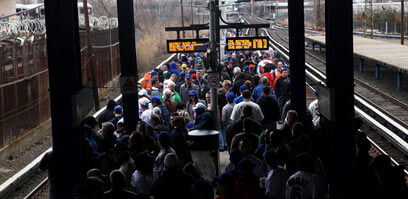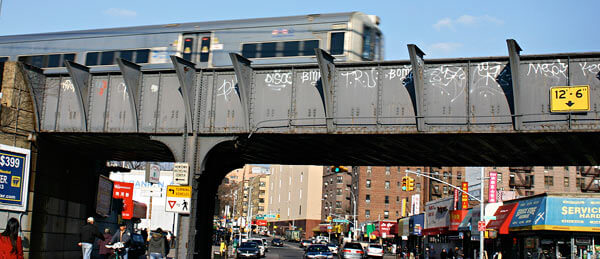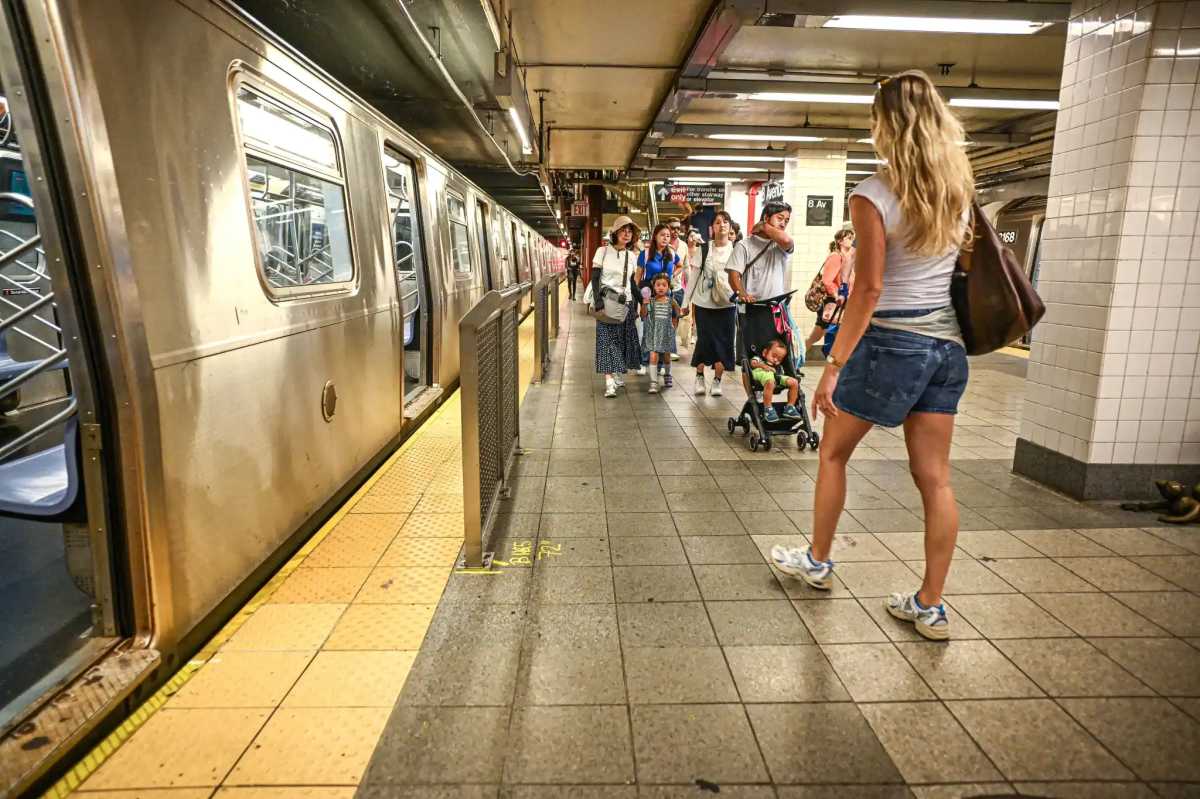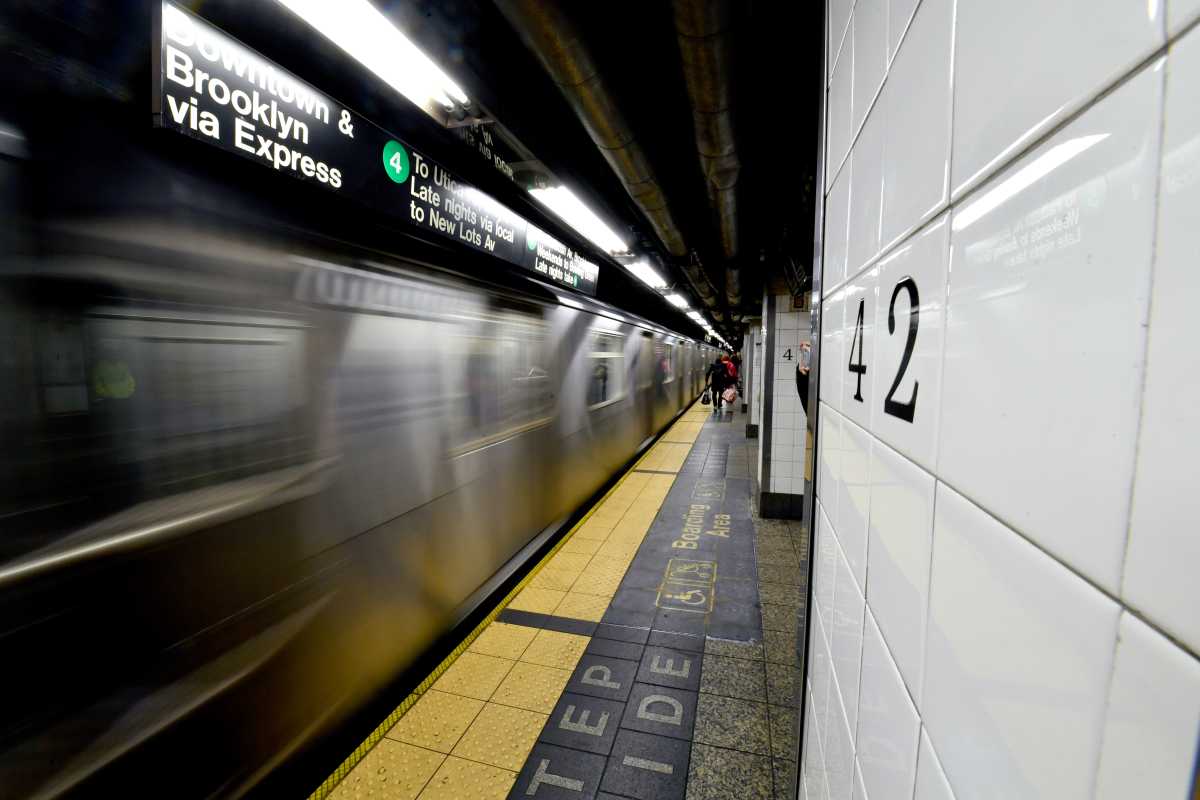By Joe Anuta and Philip Newman
Queens commuters have long heard that the East Side Access project will revolutionize their travels, but they won’t have to wait until its debut to reap some of the benefits.
That’s because there are some major developments on tap before the Long Island Rail Road starts rolling into its new destination more than 100 feet below Grand Central Terminal in August 2019.
Among the $8.24 billion project’s preliminary advantages for Queens straphangers:
• An extension of a pocket track near Great Neck will boost Port Washington line service on the Long Island Rail Road and give more travel options to Queens riders bound for Penn Station.
• An extension of the LIRR yard in Port Washington will allow the MTA to store train cars at the end of main line in Queens.
• MTA officials are looking at the possibility of adding a new station in Elmhurst.
• An upgrade at Jamaica Station will raise rush hour capacity by 40 percent for Manhattan commuters and improve service to Brooklyn.
More capacity to store train cars is crucial to increasing LIRR service, which is why the railroad has two plans in store for commuters who use the Port Washington branch.
First, LIRR will be expanding what is known as a pocket track in Great Neck, L.I. Think of a pocket track as an dead-end exit off a highway. Trains can pull off the main tracks and sit on a parallel set of rails. At the optimum time, LIRR can then route the trains back to Manhattan.
This shaves off the last third of the cars’ normal round-trip —usually they turn around five miles farther out at the rail yards at Port Washington — and will provide more frequent service for Queens riders, according to MTA spokesman Aaron Donovan.
“This gives us more flexibility to run trains without having to make them go all the way to the end of the line,” Donovan said.
Construction is set to run from September 2013 to December 2015, and will double the current pocket track’s capacity to store one train. When completed, the project will provide better rush-hour service and seat availability for Queens riders using the nine stations between Great Neck and Penn Station. It will also boost travel to Willets Point, the stop for the New York Mets at Citi Field and the USTA Billie Jean King National Tennis Center.
The Port Washington branch is the main line in Queens, and one of the railroad’s most heavily used.
By January 2018, construction should be finished on a $12.1 million extension of the LIRR yard in Port Washington so that an additional 18 cars can be stored there in another move to introduce more trains for the 43,000 riders who use the line.
The East Side Access project will also bring new M-9 rail cars, the newest in the LIRR fleet.
But long before those hit the rails, pressure is expected to increase to reopen a shuttered station in Queens.
“We are looking at the potential of adding a new station that was closed in the 1980s,” Donovan said.
That would be the Elmhurst station on Broadway between Cornish and Whitney avenues. U.S. Rep. Joseph Crowley (D-Jackson Heights) and City Councilman Daniel Dromm (D-Jackson Heights) have been urging the LIRR to reopen the long-closed stop in order to ease commutes for Queens residents in the area. Their most recent presentation was in March 2012 when they walked around the grounds of the stop with Helen Williams, the LIRR president.
Riders on the Jamaica branch can also count on a dramatic increase in service as part of the East Side Access project.
Work is to begin this fall on a dedicated platform at Jamaica Station specifically for trains to and from Brooklyn, while the other platforms will be reserved solely for trains to Penn Station and the new Grand Central Terminal.
This project benefits Queens straphangers in two ways.
First, the Atlantic Shuttle will bring increased service between Jamaica and Atlantic Terminal in downtown Brooklyn. The MTA said there will be a train every 7.5 minutes, compared with midday trains running three times an hour.
“We have a higher demand for Brooklyn now that the Barclays Center (in downtown Brooklyn) is open,” Donovan said, “because the arena is right across from Atlantic Terminal and is a very convenient way to get to the games.
“In fact, once the Islanders move from Nassau County, there will a much more pronounced demand,” he said.
But even commuters who don’t travel between Queens and Brooklyn will see better service, according to the MTA.
Passing through the yards at Jamaica is currently very complicated. Trains heading to and from a host of different destinations must all switch tracks at a very slow speed and cross in front of each other, basically creating a logjam that delays everyone.
By separating the new route to and from Brooklyn, the LIRR can simplify the rest of the switching operations through the station.
“It disengages Brooklyn trains from Manhattan trains,” Donovan said.
The $283 million price tag for the Jamaica project includes building a pocket track in Massapequa and a mid-Suffolk rail yard. The complex undertaking is scheduled for completion in January 2018.
As the Long Island Rail Road gears up for the day that its trains begin disgorging passengers in Grand Central, work is progressing on the Second Avenue subway, which must be completed to carry the new LIRR ridership. The Lexington Avenue line already transports more than 40 percent of all subway riders in the system on the 4, 5 and 6 and cannot handle the LIRR riders.
And a milestone was reached earlier this spring. MTA sandhogs set off their last blast in tunneling six miles from the Sunnyside Yards to a point underneath Manhattan, creating a cavern through which 24 LIRR trains will travel for the first time to Grand Central Terminal.






































